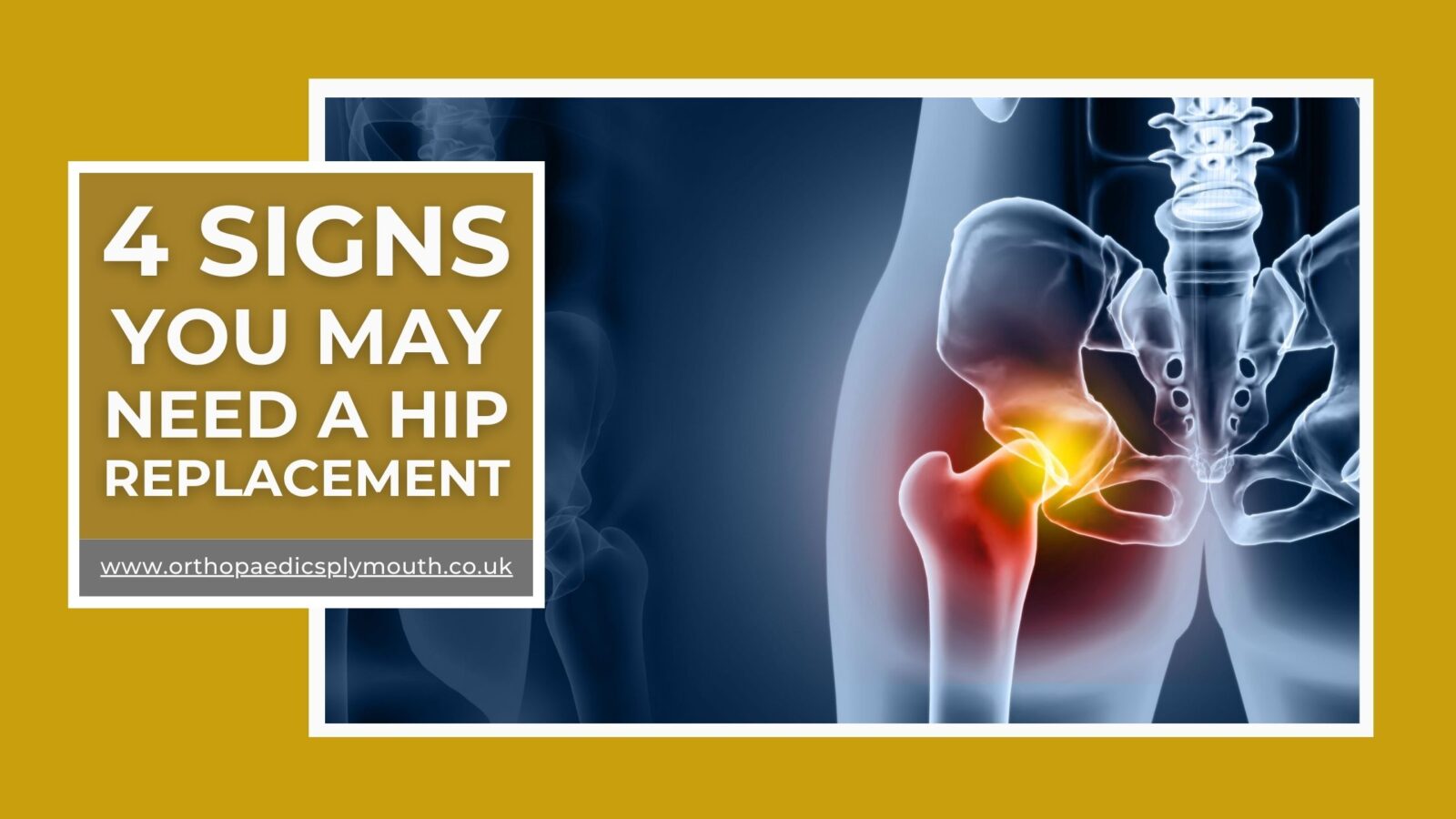There are no set rules when it comes to a hip replacement. While surgery is commonly associated with older patients, in truth it’s a life-changing procedure for anyone with a worn hip joint no matter your age.
Below are 4 signs you might need a hip replacement:
Give away signs:
- Pain in the hip or groin area can be a major indicator that there is a problem with your hip joint
- Pain preventing you from maintaining a normal activity level can be a sign of arthritis
- Is there any clicking, popping or grinding that is impairing your normal range of movement?
- Can you stand and put weight on your problem hip for more than a minute?
Your hip replacement explained…
Your GP will recommend a hip replacement if you have extensive wear and tear or a condition like osteoarthritis that has worn down your hip joint over time. We aim to reduce pain and improve mobility so the patient can perform daily activities again.
A hip replacement involves the removal and replacement of your natural ball and socket joint. These prosthetic replacements are typically made from metal or ceramic. After surgery, recovery typically involves physical therapy and rehabilitation to help patients regain and build up mobility and strength in the new joint.
Is a painful hip stopping you from doing the things you love?
Hip replacements are most common in adults aged between 60 and 80 years old. This is because younger adults are unlikely to have worn down a joint to the point where a complete replacement is required. As we age, we also experience a gradual loss of muscle, this means that the muscles that could once compensate for weakened joints are not as strong as they once were.
Hip replacement surgery includes:
- a pre-operative assessment,
- anaesthesia
- surgery conducted by David Stitson, a skilled and experienced orthopaedic surgeon,
- and post-operative care
Your recovery will follow a bespoke treatment plan that’s designed to get you back to your ‘mobile best’ as soon as possible. Our professional and compassionate team will look after you every step of the way.
The following signs may indicate hip arthritis or be symptoms of other hip problems. The best way to accurately diagnose the state of your hip is to speak to a specialist and have an x-ray.
1. Hip or groin pain
Pain around the hip or groin area can be one of the major indicators that there may be an underlying problem with your hip joint. Here are some of the different ways it can display|}.
Pain when walking
If your hip or groin pain is preventing you from walking normal distances for you or completing your usual daily activities, then speak to a specialist. It’s important to remember that this can be relative to you – it all depends on your lifestyle. For some, being able to comfortably stroll a short distance to the local shop is sufficient. For others, being unable to complete a five-mile walk is unthinkable.
You may find yourself compensating with a limp, relying on a walking stick, or even needing painkillers just to cope with the pain of walking or other activities such as climbing the stairs or getting into a car.
Pain during exercise
Soreness or pain during or after exercise which is stopping you from being as active as you normally would, be it jogging, swimming or other physical activities, can be a sign of hip arthritis. The pain is usually localised between your hip and knee. If the pain is lower down towards the ankle the problem might be caused by back problems.
Pain at night
If your hip pain makes it hard to fall asleep or you find yourself waking up because of the pain caused by your movements in the night – talk to your GP about it. There are a number of hip or joint-related issues that could be affecting your sleep.
2. Stiffness
Difficulty putting your shoes or socks on is a common sign of stiffness in your hip, especially if one foot is more difficult than the other. You may also start to feel your hip joint clicking, popping or grinding in ways which impair your normal range of movement. If this is an ongoing problem, you should speak with a GP.
3. The one leg test
If you can’t stand on your problem leg for longer than a minute – even with the support of a door frame or table-top for balance, then you might have a problem with your hip.
There are some other exercises you can try at home to see if you could benefit from hip pain treatment. For instance:
- Lying on your back or sitting, can you bring your knee to your chest? Assist with your hands if you need to.
- Lying on your back, can you move your leg out to the side without moving your trunk?
- Sitting on a chair, can you place your ankle on the opposite knee and let the knee drop down as far as possible?
For each test, compare both sides of your body. You may find the test easier on one side than the other, and many people notice this.
4. No relief from other treatments
Most hip problems can be resolved without a full hip replacement. There is a range of treatments available, including physiotherapy, medication and hip resurfacing that may better address your symptoms. If your hip pain is not severely limiting your daily life, or you have found ongoing relief from these less invasive treatments, then it indicates a hip replacement is likely not the right option for you yet.
BOOK A CONSULTATION TODAY TO IMPROVE YOUR QUALITY OF LIFE.
Call: 01752 761818 | Email: enquiries@orthopaedicsplymouth.co.uk




